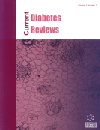
Full text loading...
We use cookies to track usage and preferences.I Understand
Type 2 diabetes mellitus (T2DM) is considered a global health challenge with increasing prevalence in recent years. One of the key elements in managing T2DM patients is controlling their lipid profile. Recent studies suggest microbiome-targeted therapy (MTT) as a treatment strategy for enhancing lipid profiles in these patients.
The current study aimed to investigate the impact of MTT on lipid indices of T2DM patients by performing an umbrella approach.
Three international databases including PubMed, Scopus, and Web of Science were searched from inception up to April 2023 to find meta-analyses evaluating the impact of MTT (prebiotics, probiotics, and synbiotics) on the lipid profile of T2DM patients. Two independent researchers extracted data from the relevant meta-analyses. To find the source of heterogeneity various subgroup analyses were performed. Comprehensive Meta-Analyses (CMA) software version 3 was utilized for the final analysis.
Based on the results of the current study, MTT had on significant effects total cholesterol (TC), triglycerides (TG), low-density lipoprotein (LDL), and high-density lipoprotein (HDL) (ES: -0.092; 95%CI: -0.111, -0.074; P< 0.001, ES: -0.109; 95%CI: -0.137, -0.081; P< 0.001, ES: -0.036; 95%CI: -0.068, -0.005; P= 0.024, ES: 0.109; 95%CI: 0.056, 0.162; P<0.000, respectively). In subgroup analysis, probiotics showed the most substantial effect on all lipid biomarkers.
This research has provided promising insights into the potential impact of MTT on lipid levels in patients diagnosed with T2DM. Notably, MTT had the greatest impact on HDL levels, followed by TG, TC, and LDL. As a result of our study, MTT is recommended as an adjunctive therapeutic option for T2DM treatment due to its capability to regulate lipid profiles.

Article metrics loading...

Full text loading...
References


Data & Media loading...
Supplements

